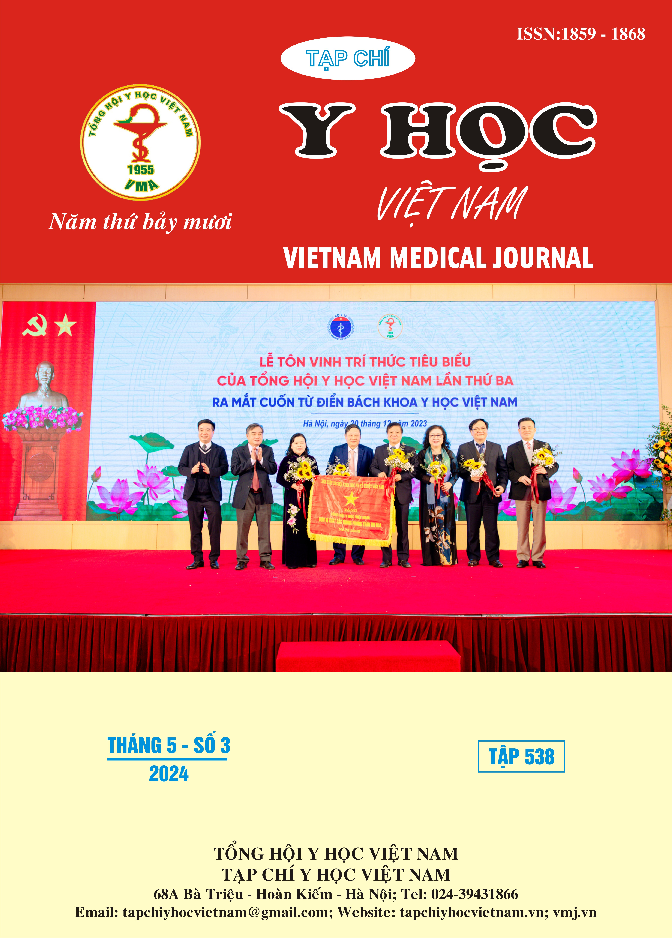EVALUATION OF THE RESULTS OF SURGERY FOR BRAIN HEMORRHAGE IN STROKE PATIENTS AT THE STROKE CENTER OF PHU THO PROVINCIAL GENERAL HOSPITAL
Main Article Content
Abstract
An open, prospective, non-control study of 52 cerebral hemorrhagic stroke patients who were in surgery treatment in Phu Tho general hospital,Glasgow coma scale from 5 to 12; none of vascular malformations; none of brain tumors. Results: Men: Average age: 62.25 ± 16.23; The earliest arrival time is 62.0% before 6 o'clock. Lowest 6-12 hour period accounted for 5.7%. The ratio of size of hematoma <30gr in XHN position group accounts for 4/52 cases, accounting for 7.7%. The highest hematoma 40-50gr accounts for 23,2%; Died during and after treatment over 1 months of leaving hospital: 5.8 (%) Severe disability accounts for 15.3% in the temporal region. Conclusion: Surgery treatment has an important role in cerebral hemorrhagic stroke. The indication of surgery treatment depends on mass effect syndrome and total state of patients and the will of the relations
Article Details
Keywords
xuất huyết não không do chấn thương, phẫu thuật lấy máu tụ nội sọ, tụ máu nội sọ, tụ máu nội sọ không do chấn thương.
References
2. Fred Rincon S. A. M. (2015). Clinical review: Critical care management of spontaneous intracerebral hemorrhage. Critical Care. 12: 237-252.
3. Shahid Siddique D. M. (2000). Surgical treatment of intracerebral haemorrhage. British Medical Bulletin. 56 (No 2): 444-456.
4. Qureshi A. I., Tuhrim S., Broderick J. P. và cộng sự (2018). Spontaneous intracerebral hemorrhage. New England Journal of Medicine, 344 (19), 1450-1460.
5. Qureshi A. T. S., Broderick JP et al. (2020). Spontaneous intracerebral hemorrhage. N Engl J Med. 344: 1450-1460.
6. Nguyễn Văn Chương (2016). "Các thang điểm thần kinh học lâm sàng trong thần kinh học và phẫu thuật thần kinh". Thần kinh học toàn tập. Phụ luc III. tr10459.
7. Nguyễn Văn Thông (2020). Điều trị ngoại khoa chảy máu trong sọ do tăng huyết áp. Nhà xuất bản y học, 151 – 163.
8. Siddique MS M. A. (2000). Surgical treatment of intracerebral hemorrhage. British medical bulletin: 56 (No 2), 444 – 456.
9. Takahashi. O (2019). Risk stratification for in-hospital mortality in spontaneous intracerebral haemorrhage: A Classification and Regression Tree Analysis”. Q J Med, 11(99 ), 743-750.
10. HU Y. Z. (2018). Epidemiological and clinical characteristics of 266 cases of intracerebral hemorrhage in Hangzhou, China “Journal of Zhejiang University-SCIENCE B (Biomedicine & Biotechnology) 14(6), 496-504


